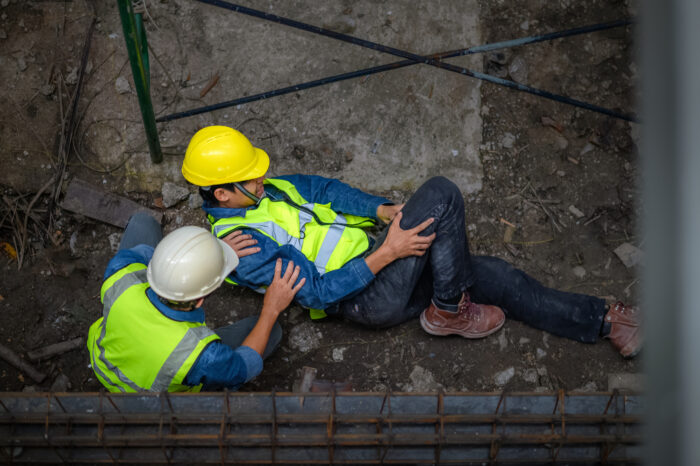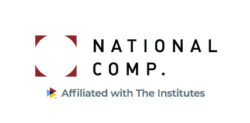Employers’ Guide to Successful Workers’ Comp Claim Investigations

Workers’ compensation claim investigations are part art, part science and require a keen eye for identifying facets of a claim that may impact the outcome for the injured worker and the employer.
Claims investigations are a perennial topic of keen interest for the National Comp conference. This year’s program agenda will include a Masterclass on the topic, How to Execute a Bulletproof Claim Investigation on Sept. 21st.
This Masterclass will be presented by Michael Stack, principal of Amaxx and an expert in workers’ comp cost containment systems, and Stuart Colburn, shareholder of Downs & Stanford P.C., with more than 25 years of experience in workers’ compensation.
In advance of the presentation, Stack and Colburn shared their thoughts with Risk & Insurance on what a bulletproof claim investigation really means.
Leading with Integrity
It is hard to overstate the importance of implementing a bulletproof workers’ comp claim investigation.
As Stack explained, it is the difference between getting a claim right and missing it, between a high-integrity program and just guessing on a claim.
“Getting the investigation right means lower workers’ comp costs and improved injured worker outcomes,” Stack said. “A proper accident investigation system can save a company thousands if not hundreds of thousands of dollars in workers’ comp costs.”
Indeed, a proper investigation by the employer and the carrier, in every case, communicates a commitment to a high level of competency to the workers and the insured whether a traditional claim model or a claim advocacy model is preferred.
According to Colburn, the tone of the investigation cannot be minimized. The investigation should balance the need for accurate information and the need to set expectations.
“The worker is probably unfamiliar with the claims process and understandably has some anxiety,” Colburn said. “The investigation can set the expectations for proper treatment and return-to-work opportunities while communicating a high level of dignity and respect for the worker. A worker that does not feel that they are heard will likely find an attorney who will [listen].”
A Well-Defined Process
There are several key stages to a proper workers’ compensation claim investigation.
“First, you need to act with integrity, and part of that is just treating injured workers like people. We want to treat these injured workers with respect and dignity,” Colburn said.
“Most of them sustained a compensable injury, and they’re entering into a system where they’re scared, and they don’t know what to expect. An effective investigation starts with being a good person and doing good things. If you take this approach from the beginning, you are acting with integrity, and you’re going to get significantly more information during your investigation.”
Recording the Statement. Colburn breaks down the recorded statement into five sections: (1) Comfort, (2) Conversation, (3) Confirm, (4) Confront (only if needed) and (5) Conclude.
Each component has a precise intent. As Colburn explained, the result should be a statement that gathers all the relevant information and precludes, to the extent possible, the traveling injury (diagnoses and body parts).
“The employer has information often vital to the claims decision process. Medical records determine so many decisions,” Colburn said.
“But not all medical records are created equally. For example, objective diagnostic tests are open to subjective impressions. Thus, do not hesitate to have MRIs and other diagnostic tests reread. Securing blood or urine testing at the hospital for confirmation testing might be important in intoxication cases.”
Preserving and Documenting the Scene. An accident scene can often be chaotic and filled with heightened emotions.
So, Stack said, a fundamental step in accident investigation is to ensure the scene of the accident is preserved and properly documented.
“Make sure you take video of the scene … It used to be you had to get a professional videographer, but now everyone has a video camera in their pocket,” Stack said.
You can take a video of the scene, save it, and have it ready for anyone who needs to review it later.
“Also, we all think that eyewitness testimony is the gold standard of evidence, but it’s not. There is some great research that shows people have poor memories and that eyewitness testimony can be some of the worst evidence in a case,” Stack said.
“The only thing worse than eyewitness testimony is eyewitness testimony that you documented a day, week or month after the incident.”
In addition to video of the scene, identify where any other video cameras might be located.
“So many employers now have on-site video cameras, and if a picture tells a thousand words, a video writes a novel,” Stack said.
Mechanism of Injury. The mechanism of injury is defined as the method by which damage (trauma) to skin, muscles, organs and bones occurs. This element is a significant factor in determining if there was an injury, as well as the extent of the injury.
“After an accident occurs, one of the things I want to know most is the mechanism of injury,” Colburn said.
“Say you have someone who just had a slip or fall. The more information confirmed in the beginning prevents a well-coached worker or a provider from changing the mechanism of injury to justify a new diagnosis. Then, two months later when the chiropractor decides to expand the injury beyond just the knee to the low back or cervical spine, you have the proper evidence to dispute this expansion. Knowing the mechanism of injury prevents injury creep. The mechanism of twisting, striking etc. changes the types of injuries caused.”
Identifying Witnesses. Fully documenting an injury includes identifying the witnesses to the injury as well as their story of what happened.
“It is important to confirm the finite number of people who saw the injury so no one else may be added later,” Stack said.
Colburn added that investigators should know exactly who the witnesses of the injury are because if the claim goes south, it’s possible that the injured worker is suddenly going to come up with new witnesses that support their claim.
“But if we knew who the witnesses were in the very beginning, they can’t suddenly add witnesses, such as their best friend who just got fired the week before,” Colburn said. “Also, people should document in their own words, and own handwriting if possible, what they saw, and just as important, what they did not see.”
Additional Factors. Additional factors to note in accident investigation include:
- To whom was the injury reported?
- How soon after the injury was it reported?
- Was any medical treatment performed on the body part before reporting the injury?
“Michael preaches the importance of metrics in claims handling. And I could not agree more,” Colburn said. “Consistent application of competent claims handling best practices reduces cost drivers.”
Mistakes to Avoid
The biggest mistake Stack sees workers’ compensation professionals make is lacking a system to consistently capture good information following a claim. As he stated, many companies are using paper forms that are completed poorly, if at all.
“It is viewed as a burden rather than as an integral part of caring for their employees to create positive claim outcomes,” Stack said.
Colburn also stressed that the initial information is so critical when the case goes south. Witnesses leave. Relationships sour. Evidence is spoiled. Entities should take a look at the forms and procedures, adopting a best-practice approach for their industries and jurisdictions.
“Not only should forms be updated but additional information should be preserved, such as text messages, emails and most importantly video surveillance,” Colburn said. “Even if you do not have video of the accident, video of the worker walking in and out of the workplace might be important.”
Looking Ahead
The workers’ compensation claim process has undoubtedly evolved in recent years, thanks in part to the industry leveraging technology to implement consistently strong claim investigations.
Stack envisions the future of workers’ comp claim investigations as being more systematic and consistently good.
“McDonald’s has figured out how to make a hamburger the same exact way at thousands of locations around the world,” Stack said. “That is what I’d like to see for consistently strong claim investigations.” &
 Want to learn more about claims investigation best practices in workers’ comp? Michael Stack and Stuart Colburn are teaming up once again to bring attendees at National Comp 2023 the latest tips and tactics to help injured workers feel seen and heard while enabling employers to get the results they need.
Want to learn more about claims investigation best practices in workers’ comp? Michael Stack and Stuart Colburn are teaming up once again to bring attendees at National Comp 2023 the latest tips and tactics to help injured workers feel seen and heard while enabling employers to get the results they need.












